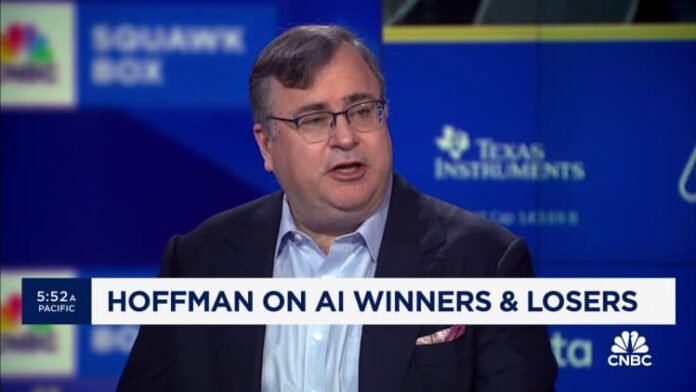LinkedIn has verified more than 55 million of its users for free to combat the spread of misinformation fueled by the rise of artificial intelligence, the company told CNBC.
The MicrosoftThe company-owned service said it has the most verified individual human identity of any major social network. In November, the company will begin showing its user verification badges in the primary LinkedIn feed.
“You’re now seeing things like deep fake videos, photos that are becoming increasingly difficult to understand with the naked eye as to whether they’re real or fake,” Oscar Rodriguez, LinkedIn’s vice president of trust and security, told CNBC in an interview. “We believe this blurring of boundaries poses a significant challenge in combating issues such as disinformation, falsification of expertise, and so on.”
LinkedIn started verifying users in April 2023. The move followed social media platform Meta launched Meta Verified, a subscription service that allowed Facebook and Instagram users to receive verification badges for their profiles.
Social networks are stepping up efforts to root out inauthentic activity, including scams and disinformation, within their services. The rise of generative AI technology since the launch of OpenAI’s ChatGPT in November 2022 has made it easier and cheaper for people to create fake social media accounts and content.
While peers charge users for verification, LinkedIn verifies people for free and uses a two-pronged strategy, with the goal of having 100 million users verified by 2025, the company said.
For users who work at large companies, LinkedIn will contact them via their work email addresses. This feature is currently limited to employees at select companies, but Rodriguez said LinkedIn is considering ways it can expand the verification technique.
The other verification method involves users submitting their government IDs to partners such as Clear and Persona and, for users in India, digitalization service DigiLocker.
LinkedIn pays the verification partners for the service. The company did not disclose how much it spends on verifications, but Rodriguez called it “a significant investment.”
“Being able to understand someone’s authenticity will be fundamental to how we view the advancement of the Internet in the future,” he said. “We basically want to make it widely accessible and thereby build a trusted community on LinkedIn.”
Only a small percentage of LinkedIn’s more than 1 billion members are verified.
LinkedIn has verified more than 55 million of its users for free to combat the spread of misinformation fueled by the rise of artificial intelligence, the company told CNBC.
Thanks to LinkedIn
Verification is key
Even before the rise of the generative AI era, fake accounts were a problem for LinkedIn. Fake accounts of high-profile tech executives such as Elon Musk, Larry Ellison and Mark Zuckerberg have emerged. LinkedIn says it removes 99% of fake profiles before users encounter them on the social network.
In the past, users could distinguish fake accounts from authentic profiles by looking at work experience and the photo, Gyanda Sachdeva, LinkedIn’s vice president of consumer products, told CNBC.
“In the world of AI, it’s not going to be that easy if you can generate photos left and right,” she said. “Verification becomes another very important signal when you think about the platform that is all about professional connections and networking.”
Meta announced Monday that it is testing the use of facial recognition technology to detect and prevent people from using celebrity likenesses to scam users on its services.
LinkedIn said it goes beyond individual users and also verifies job postings and company pages.
Sachdeva said users are motivated to apply verification because they use LinkedIn to find jobs and showcase their careers. LinkedIn said verified profiles typically get 60% more profile views, 30% more connection requests and 50% more message engagement than unverified profiles.
LinkedIn said it takes a conservative approach to verifying users — such as when a user’s professional name doesn’t match the name on their government ID — to ensure the bar remains high for the users it verifies.
“We would rather get it wrong, like potentially not verifying someone, rather than verifying someone and then realizing it was a wrong verification,” Rodriguez said.
WATCH: Head of LinkedIn MENA discusses new sentiment research






